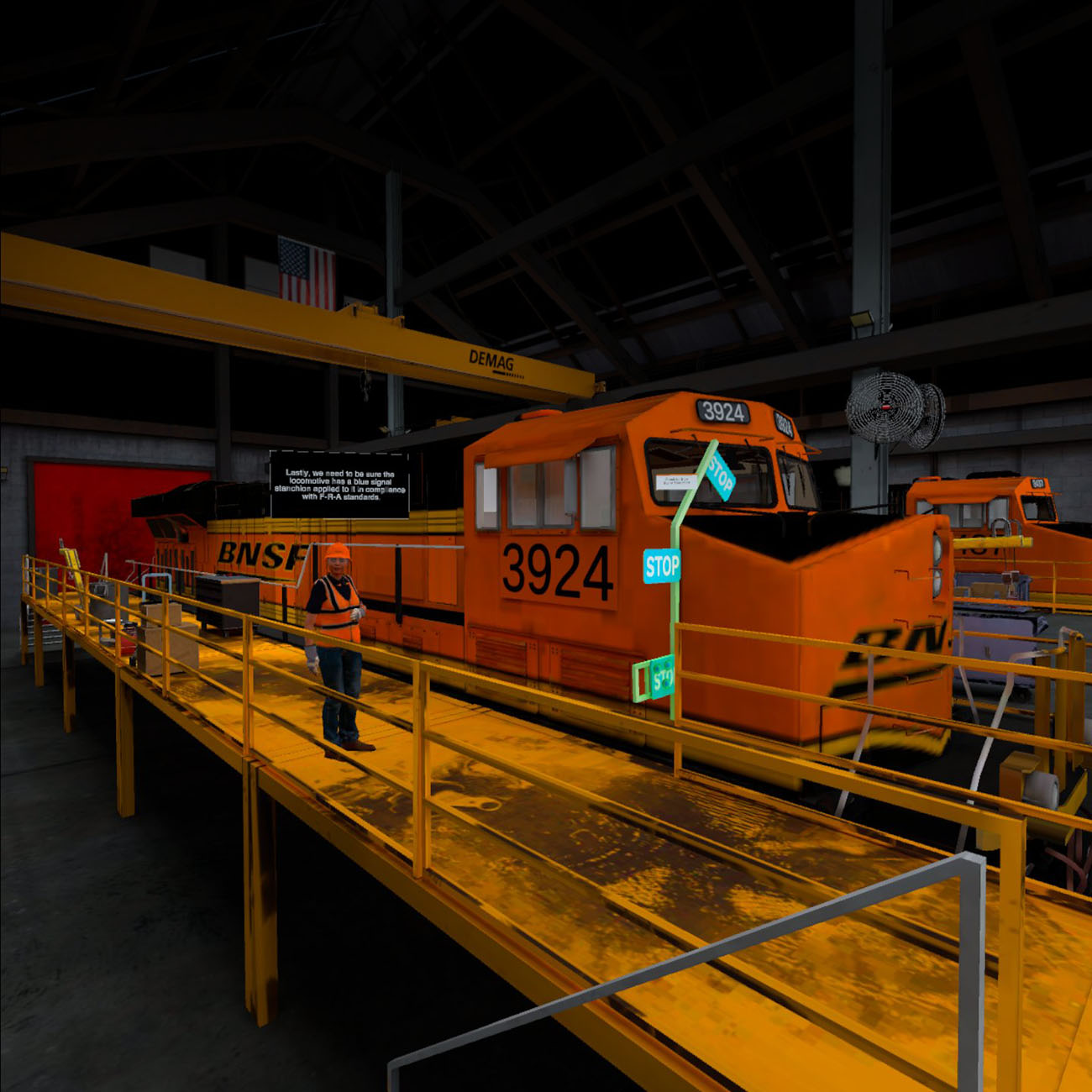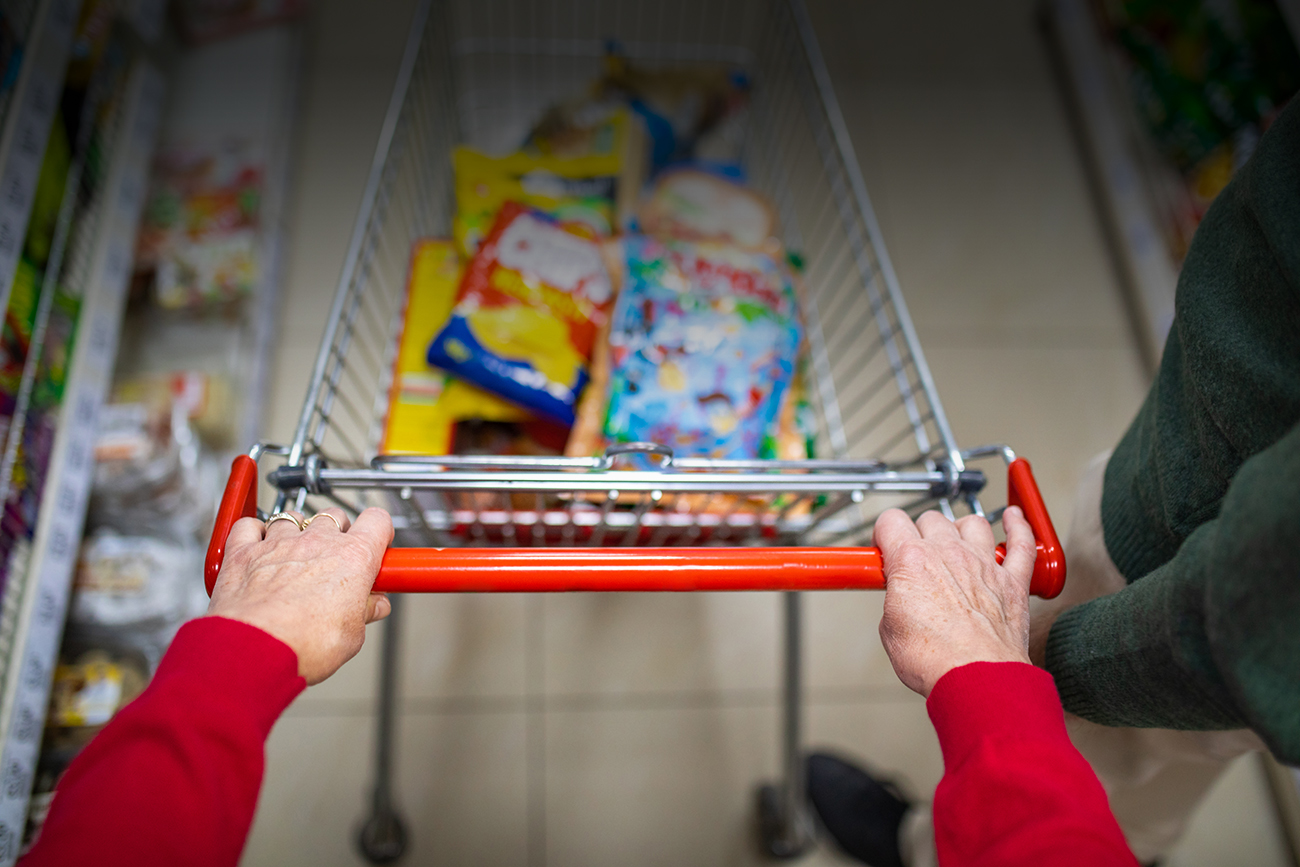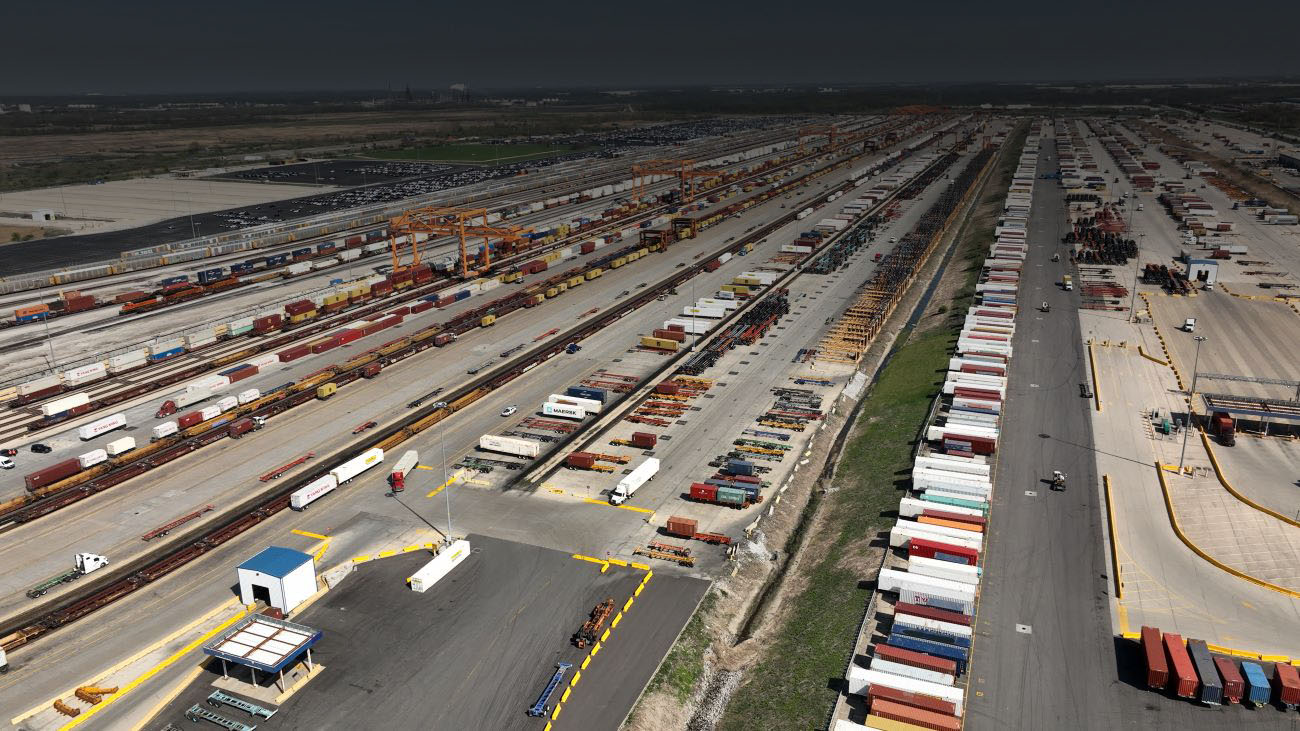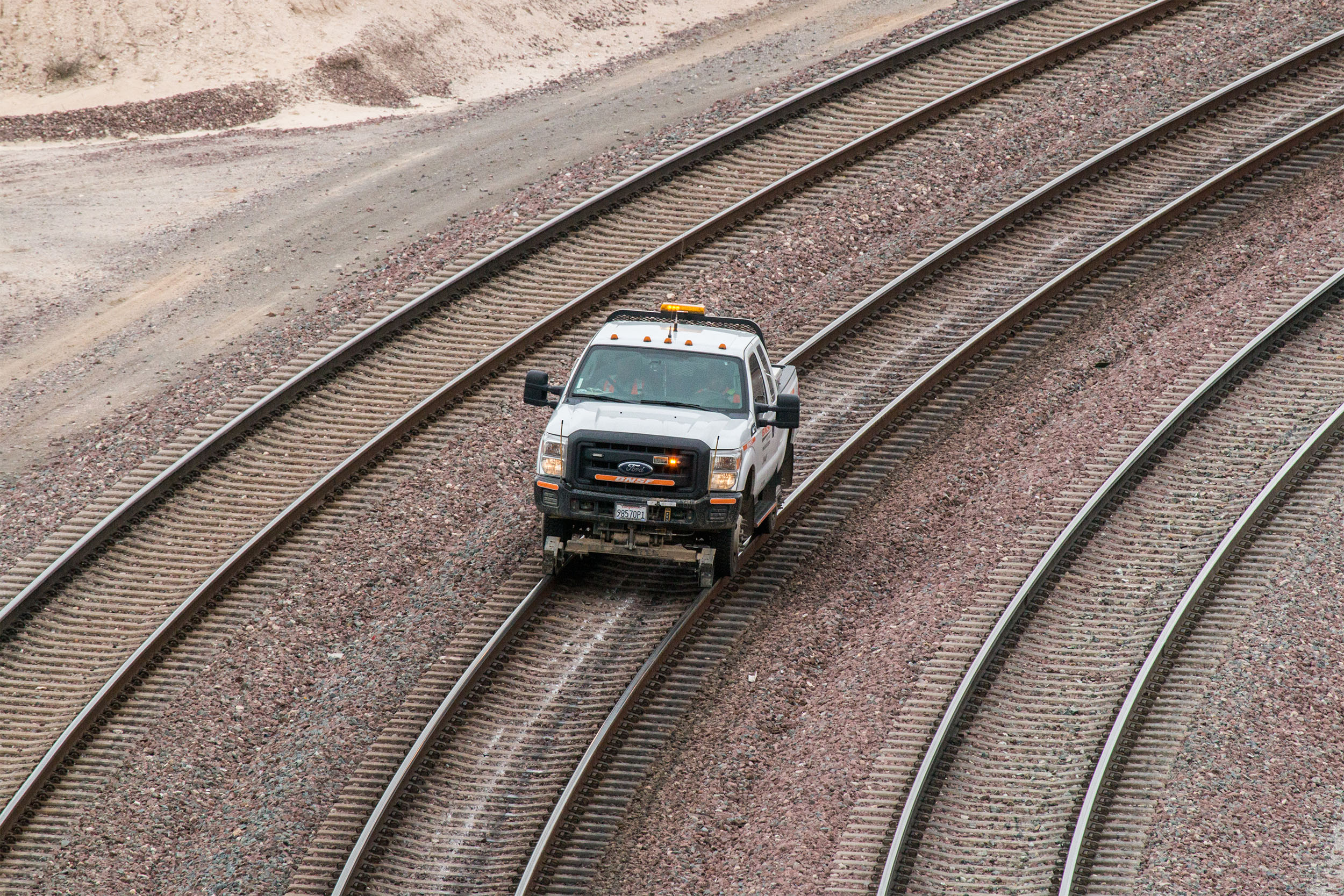
Time to shine: Team’s solution puts rail detection equipment on track
By SUSAN GREEN
Staff Writer
On the railroad, sometimes thinking outside the box means thinking beyond the book.
Keeping trains moving on our busiest and most important line takes a by-the-book approach. That’s because our Southern Transcon, a 2,200-mile freight corridor connecting West Coast ports with Midwest markets, sees about 250 trains every day, mostly intermodal. Deviations from schedules can drastically affect train flow in both directions.
Engineering crews assigned to this route, like all our track, regularly inspect components for potential defects. One technology they use is rail detection equipment mounted on a hyrail (a truck that operates on both track and roads). This equipment searches for internal flaws in the rail’s steel that are undetectable to the naked eye. These flaws could eventually lead to a broken rail, which requires trains to slow down until the defect is repaired.
Kasie Holle, general director of line maintenance, formerly oversaw two Southern Transcon track segments that have a high volume of trains. These are the Gallup and Seligman subdivisions – about 550 miles combined, or 1,100 miles if you count double track – in New Mexico and Arizona. The two subdivisions were selected for a team to evaluate and find ways to ensure more timely and thorough rail detection.
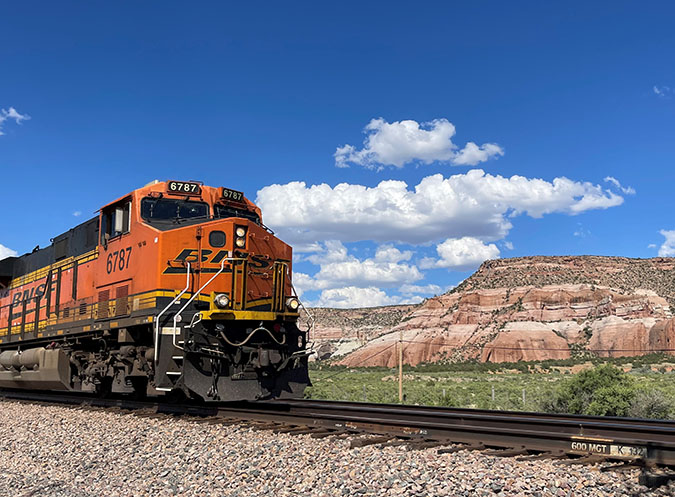
When engineering is assigned “track time” authority, crews have a window to get on the track, do their work and then release the track for train service to resume. The challenge was they couldn’t predict when the detection equipment would have access to the track, or for how long. This was because other teams needed some of the limited time available, too. The team collaborated to turn the process into a planned event that gave them more time to work with.
“There are a host of competing interests for engineering crews to get their assigned time on the rail, and all of it is important,” Holle said. “No one wants to slow down trains on the Transcon, but we needed to elevate the visibility of rail detection equipment. The more detection we can safely do and plan for, the better.”
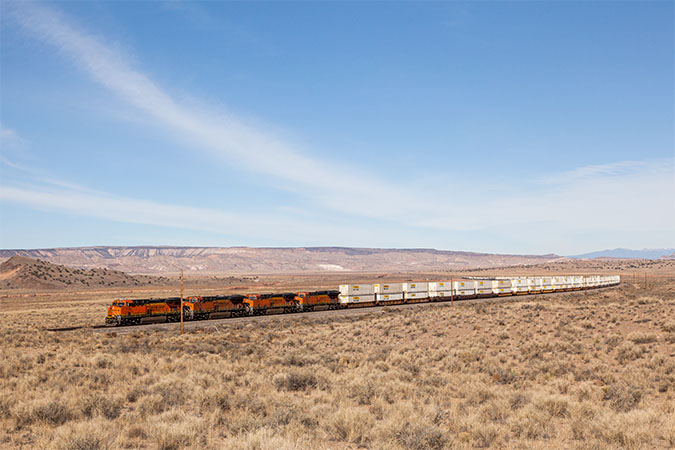
The team made process changes, getting a set number of hours each week committed to time on track for the equipment, typically early in the week, when train traffic can be lightest.
Previously, when the hyrail equipment found a potential defect, it would require verification, which took time. The new process allows for collecting data and then prioritizing the determination of what may or may not be a defect.
They also changed the process to repair issues immediately when possible. Rather than just the hyrail traveling down the track alone and collecting data, now it has a dedicated repair crew following it. If a defect is verified, the crew makes the needed repairs.
“We are not leaving defects behind," said Holle. "If one is verified within the window, a repair crew is right behind to fix the defect. Besides making this equipment a higher priority for our engineering team, those on the transportation side know that once this equipment has used its window, the testing and potential repair work are done.”
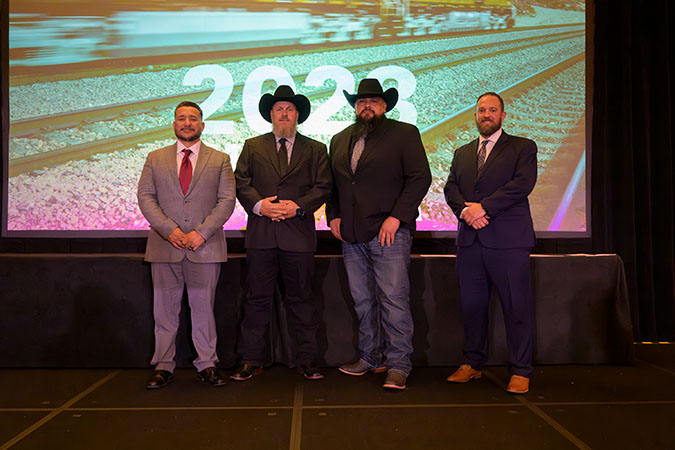
Today, these locations are among the best performing when it comes to rail detection on the network, and the pilot is becoming the model for rail detection elsewhere, especially other segments on the Transcon.
The cross-department team that helped change how rail detection is planned, supported, prioritized and executed on these two critical subdivisions was recently recognized at BNSF’s annual Employees of the Year ceremony.
Their collective work adds another how-to chapter to the by-the-book way we operate our Southern Transcon, allowing us to provide excellent service to our customers.
